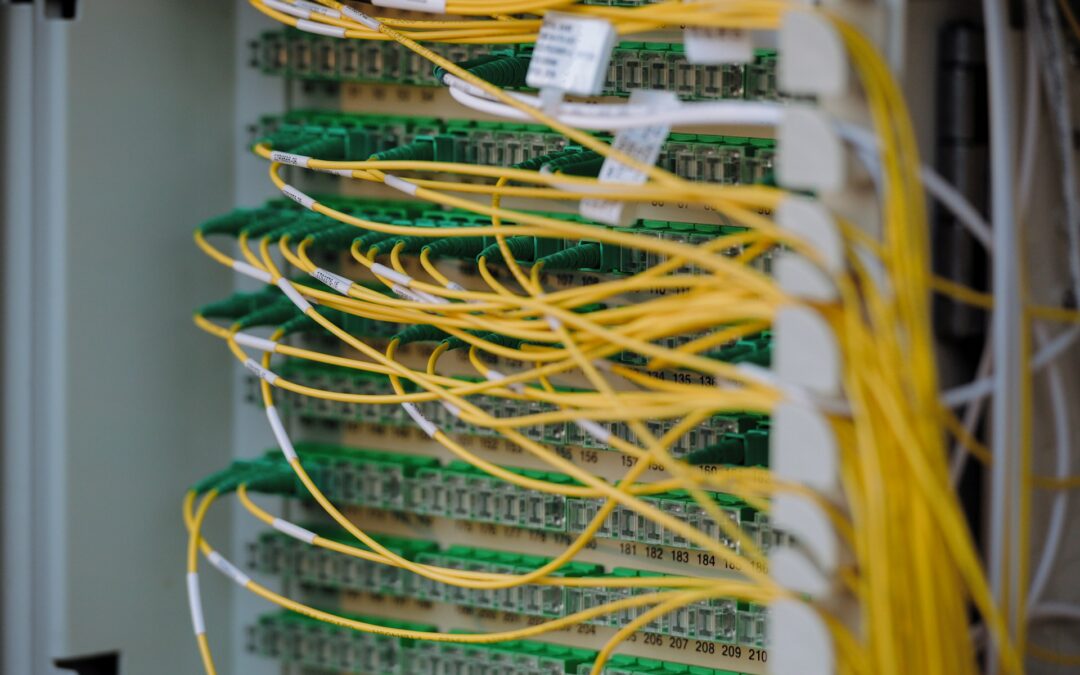Few things are more frustrating than trying to work through constant connection drops in your building’s data cable network. One moment everything is moving smoothly and the next, your systems freeze, downloads stall, or software disconnects entirely. It doesn’t take a major outage to impact your workflow, just a few seconds of downtime here and there can chip away at your team’s focus, delay customer service, or interrupt transactions when it’s least convenient.
Reliable data cabling plays a huge part in keeping operations tight, especially for businesses across Boston and nearby New England towns. Offices, retail shops, clinics, and warehouses all count on stable communication between devices to get through the day with minimal slowdowns. A solid cabling setup doesn’t just connect your computers. It keeps your point-of-sale systems, printers, phones, and cloud-based software talking to each other without awkward pauses or confusion. When the cables fail, everything else struggles right behind them.
Common Causes of Connection Drops
Connection drops can pop up for a number of reasons. Sometimes it’s wear and tear. Other times it’s something simple like how the lines were installed. The way Boston buildings vary in age and layout also plays a part. One office might have open ceilings and smooth cabling paths, while another has thick concrete walls or tucked-away equipment that makes good placement tough.
Here are a few common causes of connection drops in data cabling systems:
– Damaged or worn cables
Over time, cables can crack or fray from repeated bending, pinching, or exposure to heat. Once the coating starts breaking down or connections loosen, it doesn’t take much to drop a signal.
– Improper installation
If the original setup didn’t follow proper grounding, spacing, or routing rules, issues might appear right away or down the line. Cables should be kept away from power lines and mounted with gentle curves, not sharp bends or tight pulls.
– Environmental interference
Strong magnetic fields or nearby electrical equipment can interfere with the signal, especially if the cables aren’t shielded. Even nearby heating and cooling systems can create minor disruptions if the cabling passes close enough.
– Too much distance between points
If the cable run between devices exceeds recommended limits, the signal can weaken and cause periodic drops or delays. This shows up more in long, stretched buildings or multi-level spaces.
– Faulty terminations or loose connections
Even if the cable itself is fine, sloppy connectors or ports can easily interrupt the flow of communication. One slightly misaligned clip or port can take down multiple nodes in a network.
If you’re a business in Boston dealing with unexplained drops, sometimes the problem isn’t visible, even if everything looks well-wired on the surface. That’s why it helps to know how to methodically check what’s going on behind those noticeable lags.
Step-by-Step Troubleshooting Guide
Small hiccups in your network can feel big if they keep happening without warning. When that happens, it helps to walk through a few steps to see if there’s something simple at play before getting professional support. You can sometimes catch problems early just by taking a close look at the basics.
Here’s a general process you can go through to troubleshoot data cable connection drops:
1. Check physical cables
Walk through your space and inspect the actual cables. Look out for anything frayed, pinched behind furniture, or kinked near tight corners. Make sure nothing’s hanging loosely from ports or curves too sharply around a wall or desk.
2. Secure all cable ends
Gently unplug and replug each endpoint if safe to do so. Over time, connectors can loosen slightly or shift if the equipment moves around. A solid push can sometimes restore full contact without much effort.
3. Test network devices
Sometimes the issue isn’t the cable but the device at the end of it. Try switching out routers, switches, or network cards, starting with the simplest. If a connection stabilizes after swapping one item, you’ve found the weak link.
4. Watch for performance gaps
Log when the drops happen. Is it during high-traffic parts of the day? Do they happen in certain rooms or only on some devices? Keeping track of patterns helps pinpoint weak spots inside your setup.
5. Upgrade temporary fixes
If you’re using short-term items like low-quality patch cords or off-brand splitters to hold things together, they may introduce small but regular failures under pressure.
This process doesn’t solve every issue, but it gives you a clear route to start narrowing things down. If things are still off after you’ve gone through these basic checks, it may be time to bring someone in to take a deeper look. Connection drops aren’t just a tech issue. They slow your day, lower your team’s focus, and cost you time without warning. It’s worth getting to the root of it before it starts spreading.
When to Call Professionals for Help
There’s a point where checking cables, restarting your switch, or swapping out devices doesn’t cut it. If your network drops are sticking around no matter how many simple fixes you try, it usually means something deeper is going on behind the walls or panels.
Sometimes, the original installation wasn’t set up right, even if things seemed fine in the beginning. Or maybe your network has outgrown its setup. More users, more wiring, or different equipment that doesn’t quite match the load anymore. In either case, connection drops won’t stop without someone digging into the cabling design, rerouting paths, or replacing outdated parts. That’s well beyond a quick patch or power cycle.
Here are a few signs that it’s time to bring in professionals:
– Drops happen often and show up across multiple workstations or floors
– You’ve checked visible cables and devices, but can’t spot the problem
– New devices keep having issues even after replacing network equipment
– You’re unsure whether your current setup meets the building’s layout needs
– You suspect outdated components that haven’t been evaluated in years
If your business is in a building with complicated infrastructure, like one of the older spaces around downtown Boston, hidden interference could be a factor. Older buildings often have thick walls, tucked-away rooms, or electrical designs that weren’t built with networking in mind. An expert can test your entire system and catch the stuff that’s hard to see without the right tools.
Professional help also cuts down the risk of fixing the wrong thing while the problem keeps happening. Instead of guessing your way through new routers and switches, you get solid answers and a clear path forward.
Tips to Prevent Data Cable Network Drops
Once your data cabling is running smoothly again, you’ll want to keep it that way. Making a few smart choices during day-to-day operations can go a long way toward avoiding new problems later. Unlike short-term fixes, these steps build up long-term stability and help your systems keep up through busy months, tech changes, or reconfigurations.
To make sure new issues don’t creep into your Boston workspace, here are some maintenance tips that actually make a difference:
– Keep cables away from heavy foot traffic. Avoid letting them run under carpets or across doorways where they can get stepped on or crushed over time.
– Avoid running network cables too close to power cables, AC units, or large appliances.
– Use cable organizers and clearly labeled ports to avoid tugging, twisting, or overcrowding outlets.
– Do regular checks, especially after you rearrange rooms or bring in new equipment. Simple movements can cause stress on ports and connections.
– Store extra lengths of cable properly. Coiling them too tightly or letting them bunch behind hardware can create pressure points that weaken insulation.
If you’ve had network problems before, patching things might feel like enough, but it usually leaves the risk of another failure down the line. With proper habits in place, you’re more likely to catch trouble early before it affects your daily work.
Why Stable Connections Keep Your Business on Track
Stable data cabling plays a bigger role in your workflow than most people realize until something goes wrong. Connection drops don’t often scream for attention upfront, but left unchecked, they drag down productivity, slow internal systems, and frustrate your team. Whether you work in a retail space, medical clinic, office, or multipurpose warehouse in Boston, a clean, reliable connection helps avoid stress and downtime you just don’t have time for.
Taking time to troubleshoot, fix, and prevent cabling failures protects more than just your internet. It helps protect your pace and keeps your daily work moving. When your systems stay connected, your people stay focused, and your business avoids costly slowdowns. Regular checkups and early attention go a long way in keeping your network ready for the workload, no matter the season or changes to your setup.
Ensure your business stays connected and operating smoothly with a reliable setup. If you’re ready to optimize your network infrastructure and avoid ongoing signal interruptions, take a look at how our data cabling services can support your workflow. Let ASCIO Wireless handle the technical side so you can stay focused on running your Boston business.

